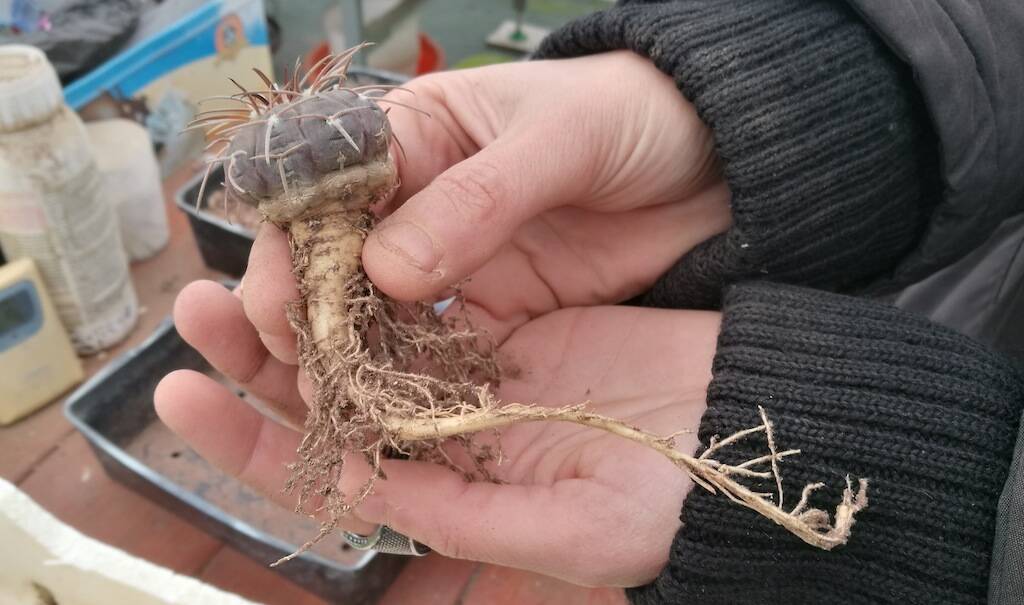Given that it is possible to repot cacti and succulent plants in almost all months of the year, for more than fifteen years I have been carrying out this operation during the winter, between December and February. If necessary, for example in the case of a suffering plant or a new purchase, I repot even in spring or in the middle of summer. I almost never repot in autumn, because in this period the plants begin to slow down their growth to start the winter stasis and I prefer to avoid “disturbing” this natural process, since repotting is always a small trauma for a plant.
We look at the benefits of repotting cacti and succulents over the winter in the article that follows. (…)
Repot in winter: the advantages
By repotting in winter, the plants are completely still (except for those that grow even in the cold like Pediocactus and some Escobaria, for example) and the soil is completely dry and it is easy to clean the roots well, where needed. If the soil in which the plant is found is already correct and if I have decided to use the same type of soil for that plant, I simply shake the earth a little to free some roots and check that the root system is in good condition and does not contain parasites. It is essential that the new substrate is dry or, at most, slightly damp. Another important aspect deriving from the choice of the winter months for repotting is in fact this: until the end of March the plants will not receive water and the roots will have plenty of time to heal. Some injury to the secondary roots is almost inevitable during repotting and, in the event of a change of substrate with thorough cleaning of the root system (for example if the plant was in peat) it can easily happen to break or injure even the primary roots. Similarly, in the event of a total change of soil or a suffering plant, it may be necessary to drastically shorten the roots by cutting them. For all these reasons, winter repotting is preferable. This is a guideline, not a rule, though. In fact, cacti and succulents in general can be easily repotted even when they are in full vegetation, as well as when they are in bloom. In these cases, however, it is important to repot in dry soil and wait at least two or three weeks before watering, keeping the plant in a bright place but not in direct sunlight.
Wait or repot immediately?
Many wonder if it is necessary, once a plant has been flared (in winter or in summer, the substance does not change), to leave it bare root for some time or if it can be repotted immediately. Let’s say that leaving the plant with the roots in the air, in a place sheltered from direct light, is certainly a good precaution. In this way we will be sure that any injuries or cuts to the roots will heal perfectly. From what I’ve learned, though, this step isn’t always necessary. If the plant is healthy and if the fleshy roots have not been injured or cut, you can repot immediately: time to remove the old substrate, check that there are no parasites among the roots, and repot in the new substrate. For years I have only allowed plants to dry for a few days in the case the root system has been affected by rot (in this case I also treat it with a powder fungicide) or those plants with major lesions to the primary roots or taproot.
Some examples
In recent weeks, as for years now, I have been dedicating myself to repotting my plants, in particular to repotting some of my sowings from 2017. These are mainly Gymnocalycium (spegazzinii and ferox), Lobivia ferox, Thelocactus lloydii. To these are added some of my sowings of Ferocactus latispinus already of a fair size, since these are plants born in 2010. All the plants are in perfect condition: the roots are healthy and well developed and the plants are robust and well formed. For my convenience and to help the growth of still young plants a little, for repotting I used a standard soil based on pumice, lapillus and peat in equal parts, to which I added 5% of fine sand.
In these photos, here are some steps of the repotting procedures during winter. To learn more about the topic, you can consult the section “Repotting“. If you want to know more about soils and materials for making the various substrates, you can instead consult the “Substrates” section.
SUBSCRIBE TO THE SITE – If you liked this article, subscribe to the site to have access to all the contents for one year or three months depending on the formula you choose. Here you will find terms and conditions.
SUBSCRIBE TO THE NEWSLETTER – If you want to receive the free newsletter every time new content is published, fill in the fields at this link!
© The texts, videos, photos and graphic elaborations of the site “Il fiore tra le spine” are original material and are covered by copyright. It’s forbidden to reproduce them in any way.
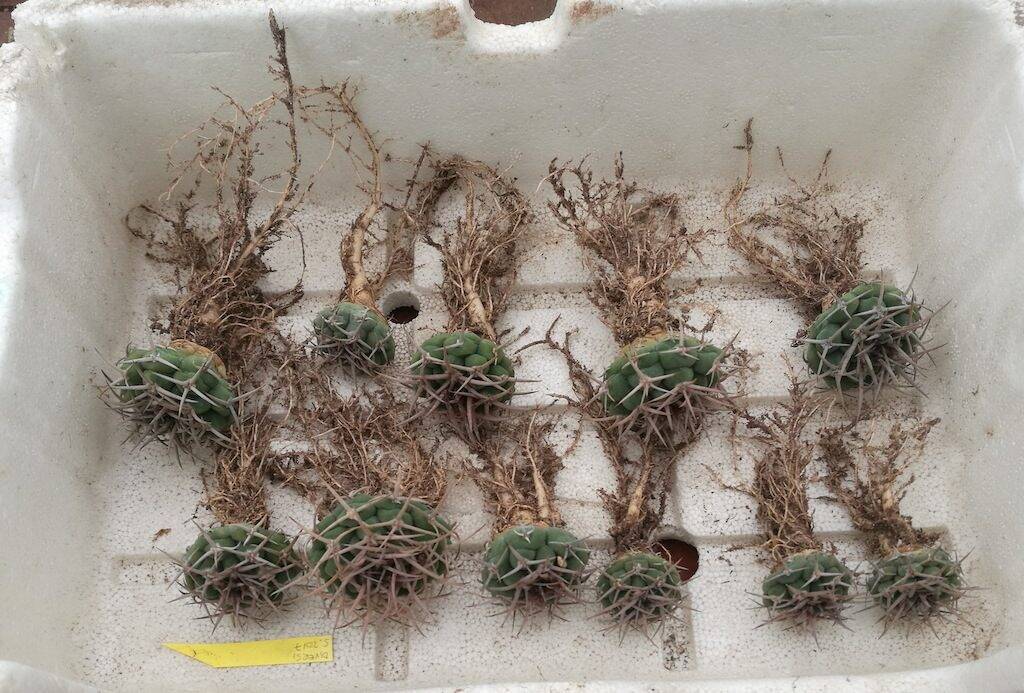
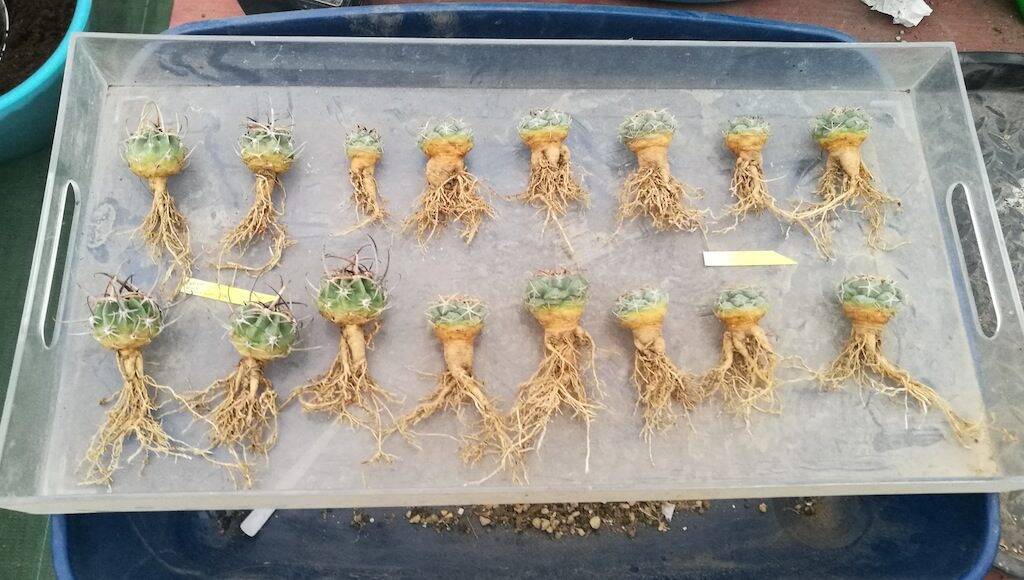
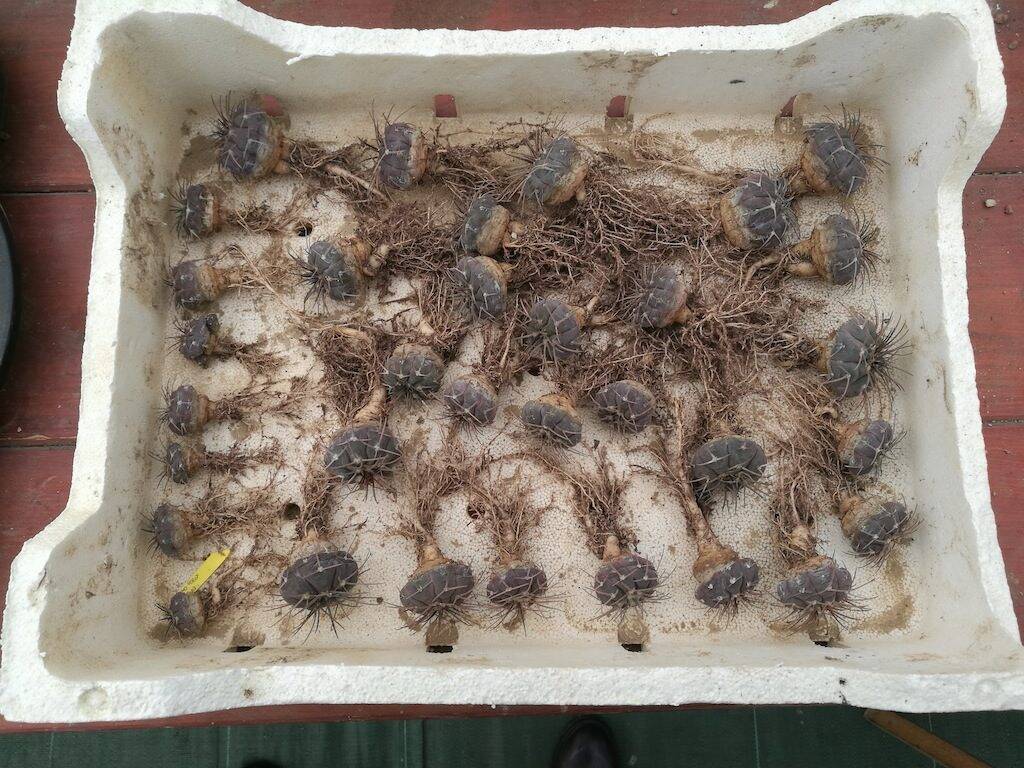
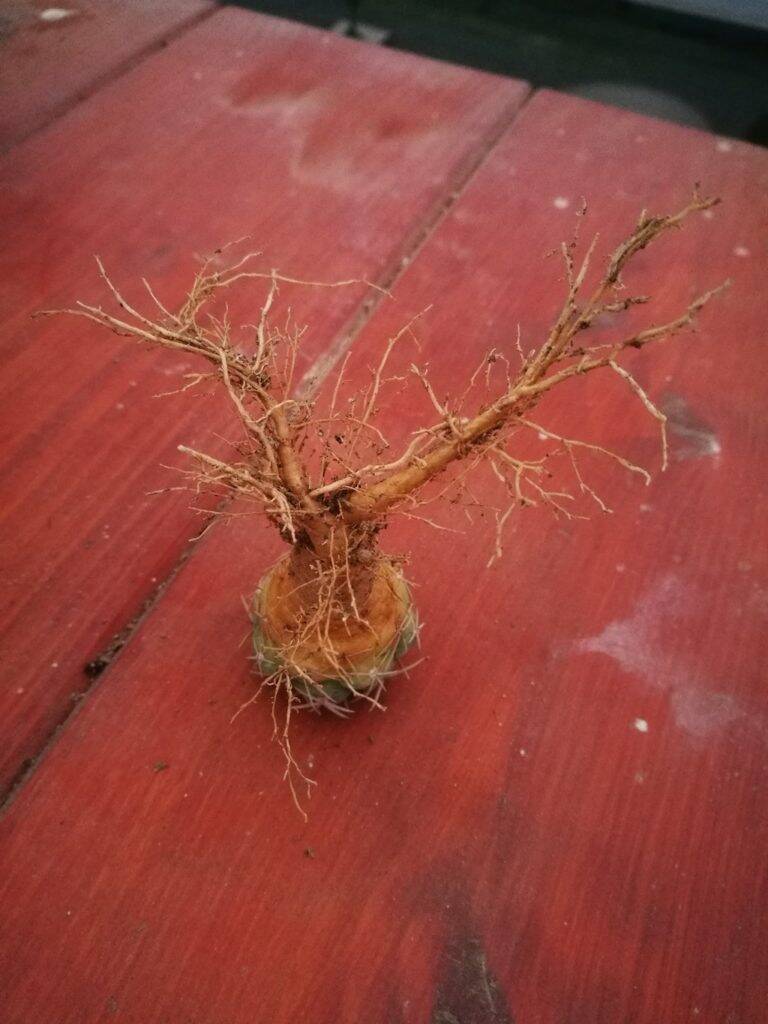
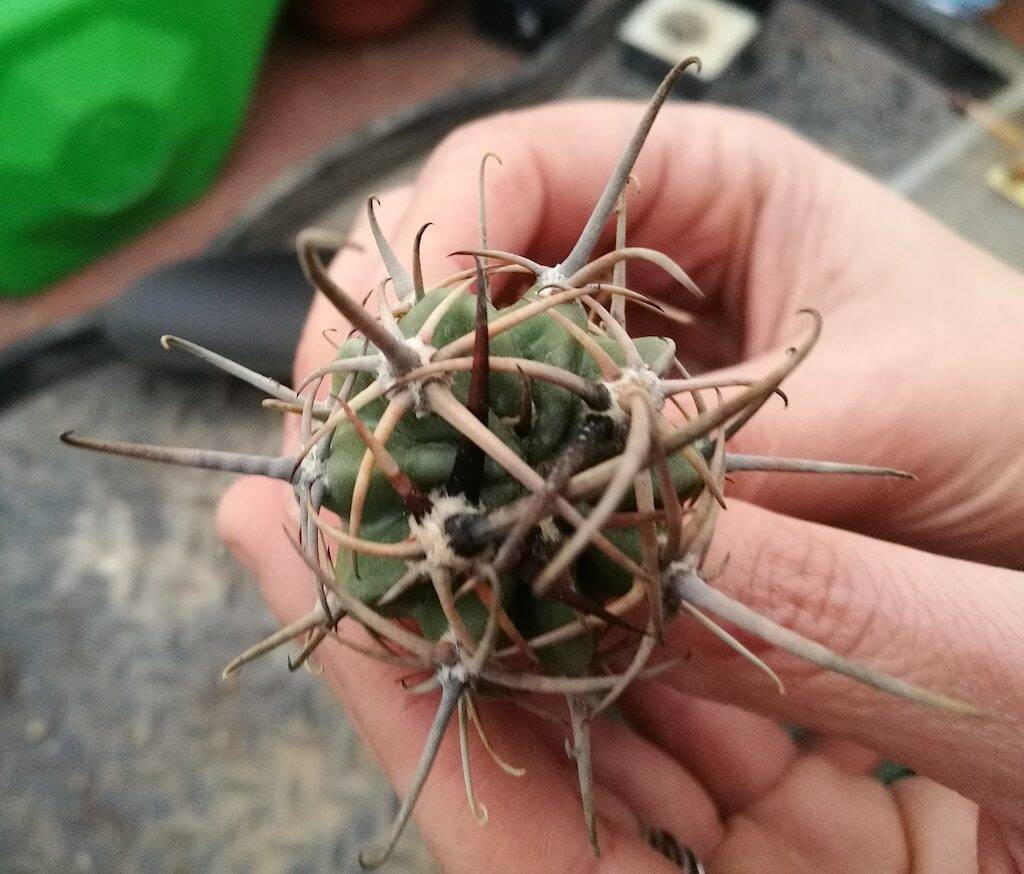
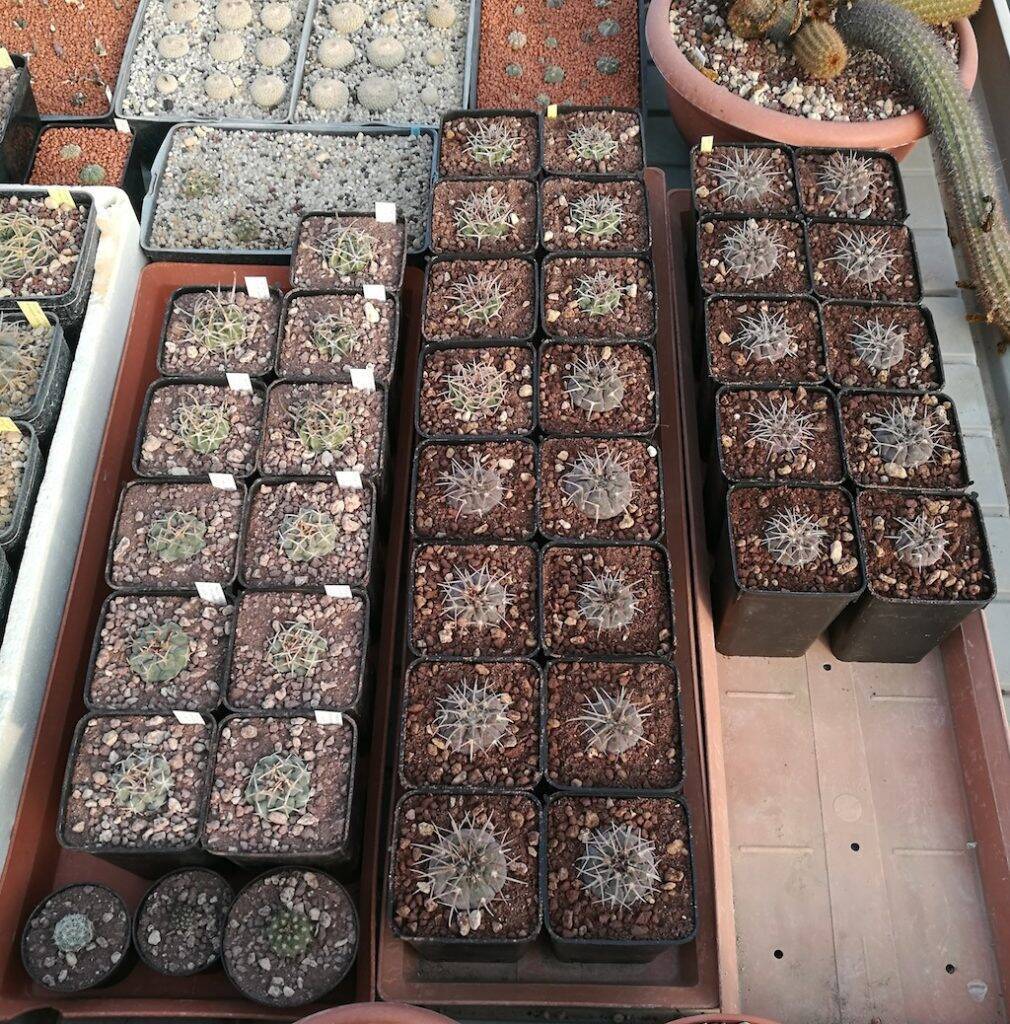
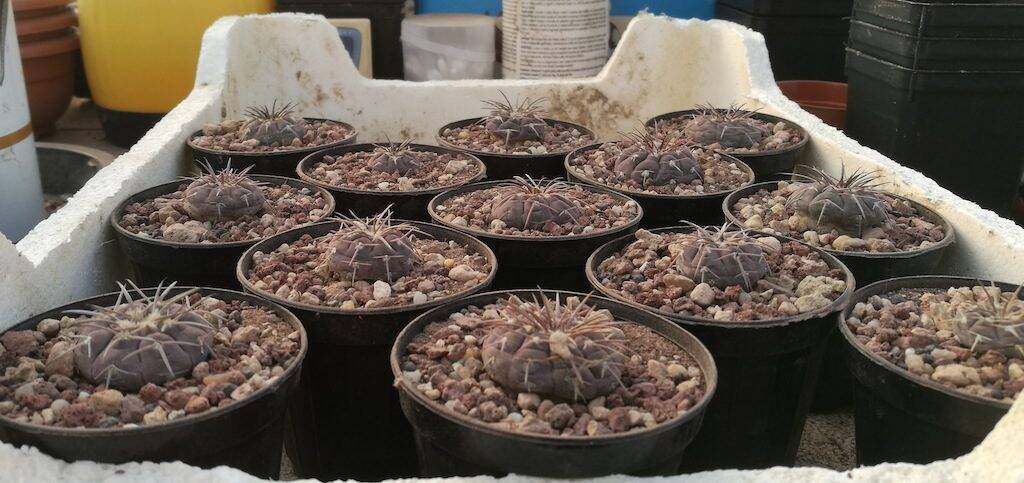
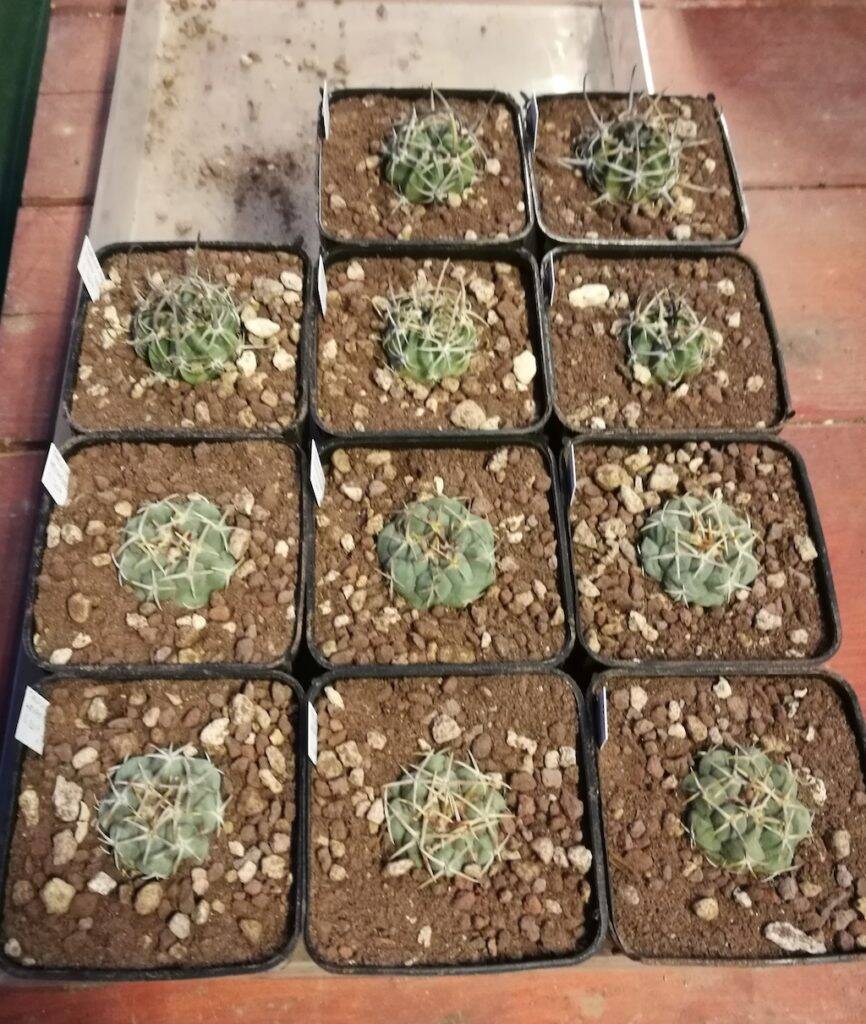
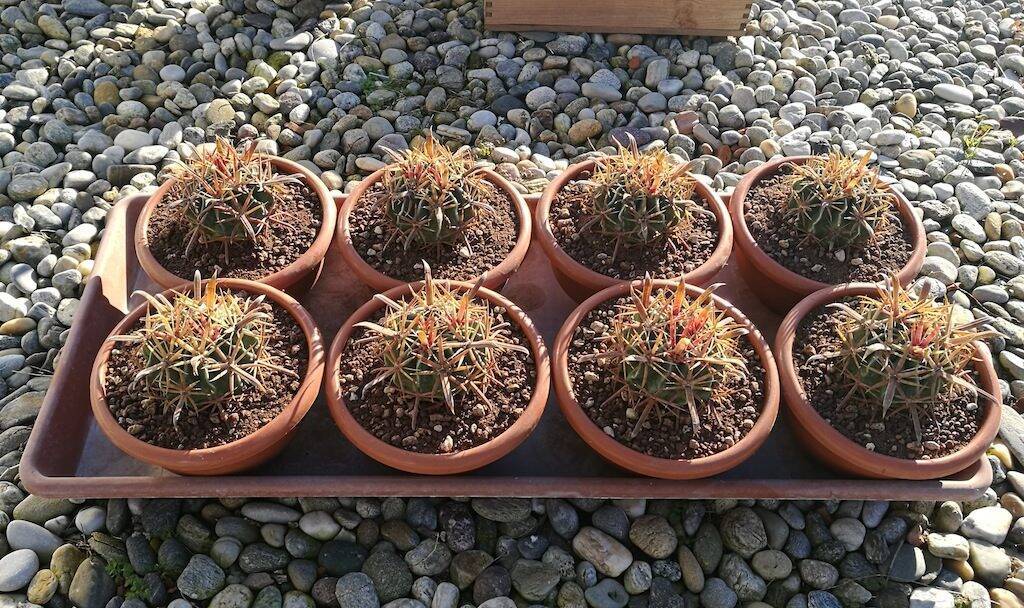
Correlated articles
All articles on sowing cactus and succulents
When to pricking out cactus seedlings
Seasonal care for cactus and succulents
Cactus cultivation cards


